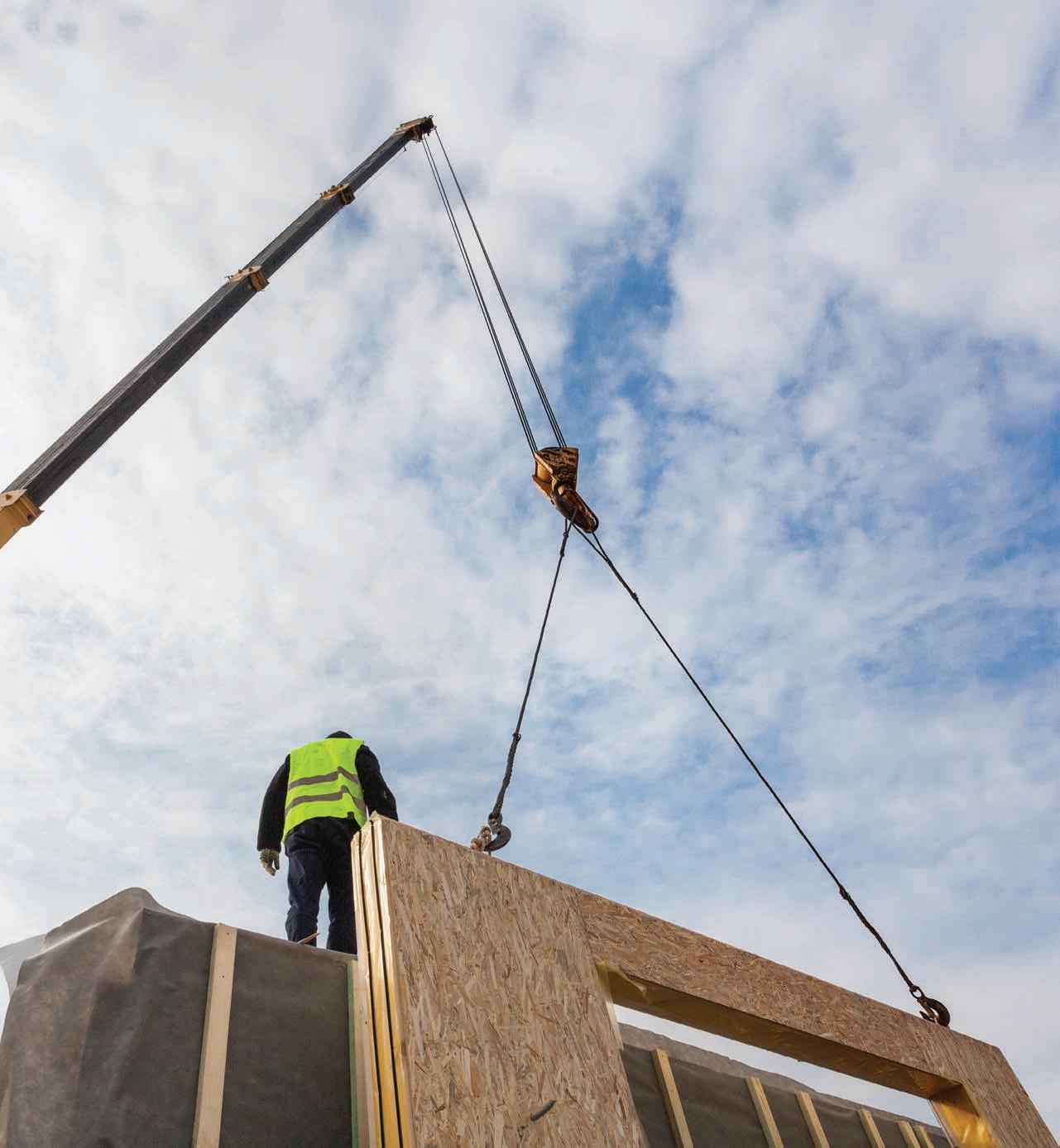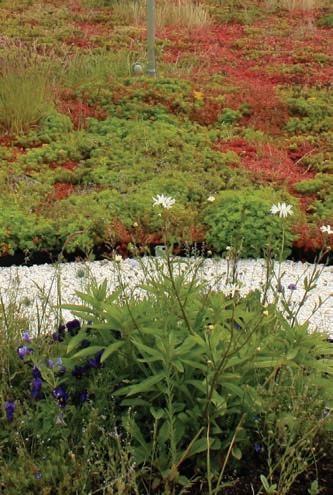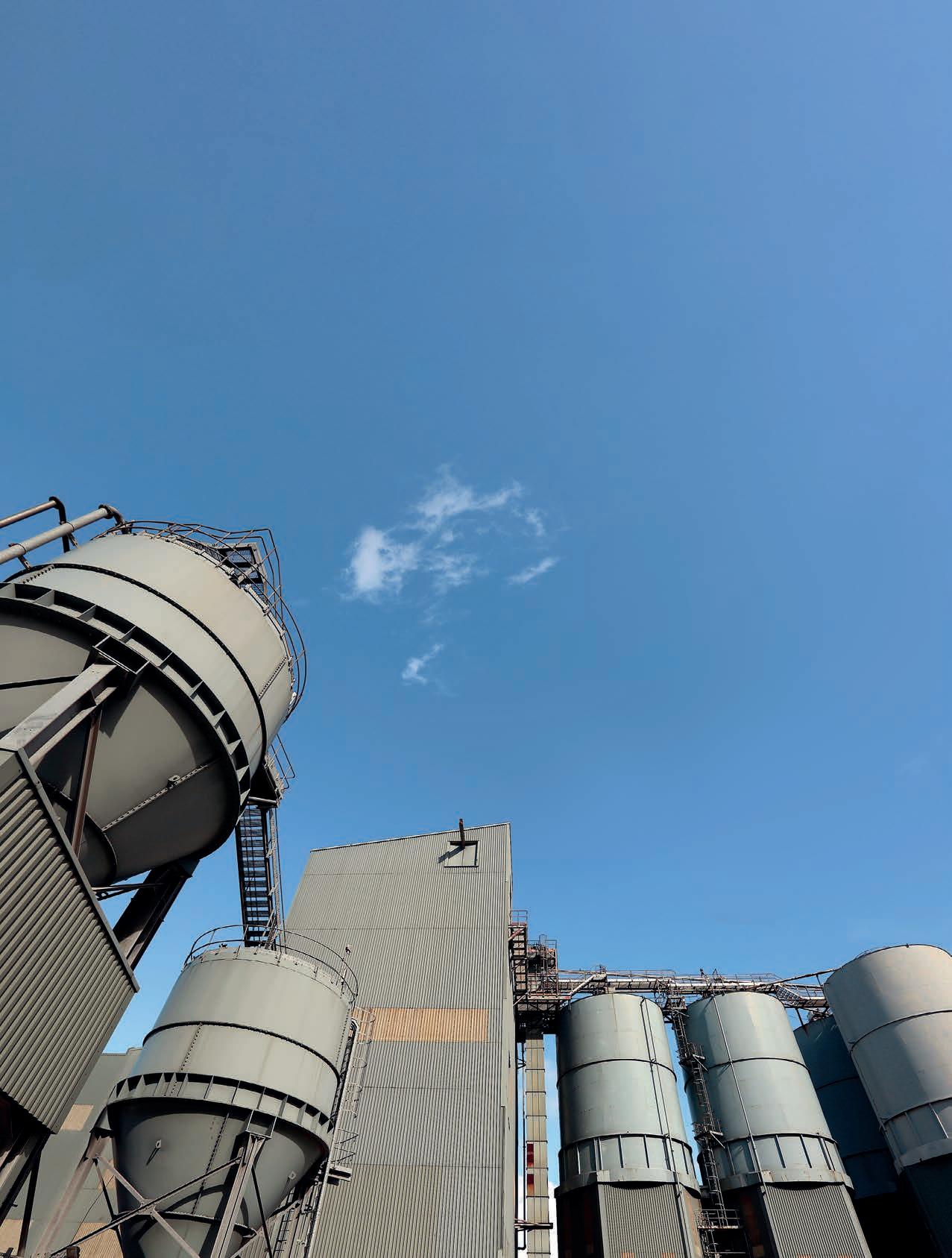
3 minute read
Kerb your enthusiasm
The development of the University of Northampton’s £330m purpose-built Waterside campus (featuring a burgeoning Waterside Enterprise Zone, a 20,000m 2 Learning Hub, student accommodation and a new low-carbon Energy Centre) required more careful consideration than most new builds. Bordering the River Nene, and built on brownfi eld land once home to the old Northampton power station and a series of industrial warehouses, the 24-hectare site posed a series of development and design challenges, not least that its close proximity to the river deemed it at high risk of fl ooding.
Jon Williamson, Specifi cation Manager at ACO Water Management, worked closely with the consultant engineers, Peter Brett Associates (PBA), on all elements of the drainage system. He notes that the development had to be aesthetically appealing because of its location, but that it also, “had to be able to provide eff ective water storage contingency capacity in the event of a fl ood or periods of heavy rainfall to mitigate any signifi cant damage to the campus”. The fl ood mitigation strategy centered on using channels with a high hydraulic capacity throughout the site and – where possible – integrating sustainable drainage system (SuDS) principles into the design.
For paved and pedestrianised areas in open view, a Brickslot channel drainage system was used. Designed as standard with a heelguard 10mm off set drainage inlet, ACO’s Brickslot (grating) when combined with MultiDrain channels provided discreet drainage because the vertical sides of the grating allow pavements to be laid directly to the unit’s edge. A number of the Brickslot channels also drained directly into swale outlets,
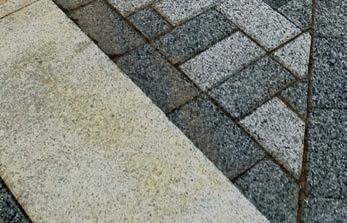



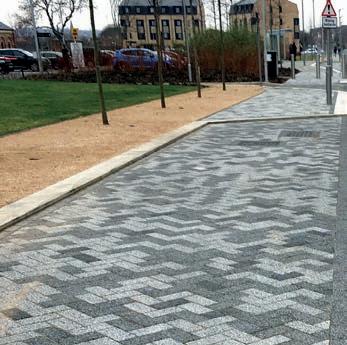
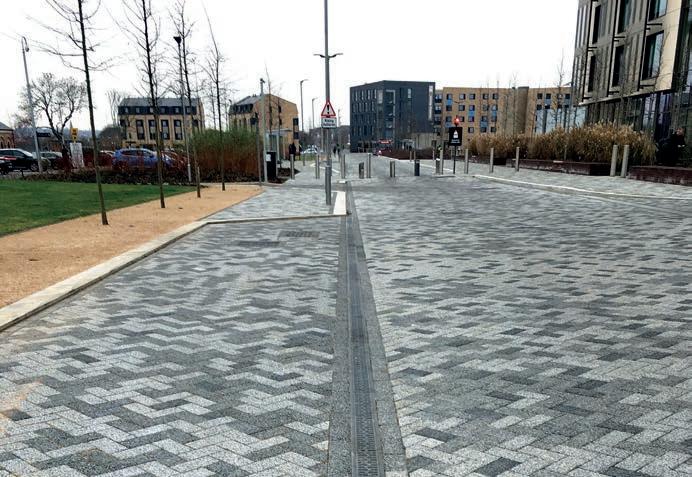
Applying SuDS principles provided a practical, yet att ractive, solution at a high fl ood-risk beauty spot Kerb your enthusiasm
located throughout the site to help facilitate the release of surface water back into the local environment in a controlled way.
Swales are shallow drainage channels with gentle side slopes in the ground where water running off a site can collect and soak away. Swales can be used to channel run-off from roads, yards and car parks, or to carry water through a site. Crucially the presence of swales throughout the site not only bolstered the site’s overall water management capabilities, but further improved the aesthetics and biodiversity of the campus by boosting the volume of green spaces.
Kerb appeal
“Another key area of the design identifi ed by the consulting engineers,” says Jon, “given the volume of road infrastructure, was kerb drainage. Specifi cally, they needed to fi nd a unit that would match the fi nish of the solid granite paving that would be used throughout the campus.” ACO’s KerbDrain met both the structural design and hydraulic capacity criteria, and the company was able to match the surrounding granite.
For quieter roads and other areas such as car parks, ACO’s MonoDrain channel was used. It is a monolithic general-purpose channel drainage system made from high performance, recyclable Vienite® polymer concrete. Unlike other monocast solutions, its inherent strength means that it requires signifi cantly less concrete haunching when being installed, which off ers a £5/m per linear metre saving on installation costs.
Finally, a series of textured RoadDrain channels, also made from Vienite® polymer concrete and built to Load Class F900, were installed at the main entrance to the campus near the River Nene. The location is the primary point of access for campuswide deliveries and HGVs, and a major bus route for students travelling to and from the campus, which meant high loadbearing capacity channels were needed.
The campus combines aspirational architecture with sustainable build principles, so it was entirely appropriate that a sustainable approach to drainage was employed – a SuDS-focussed solution to a high fl ood-risk site.




